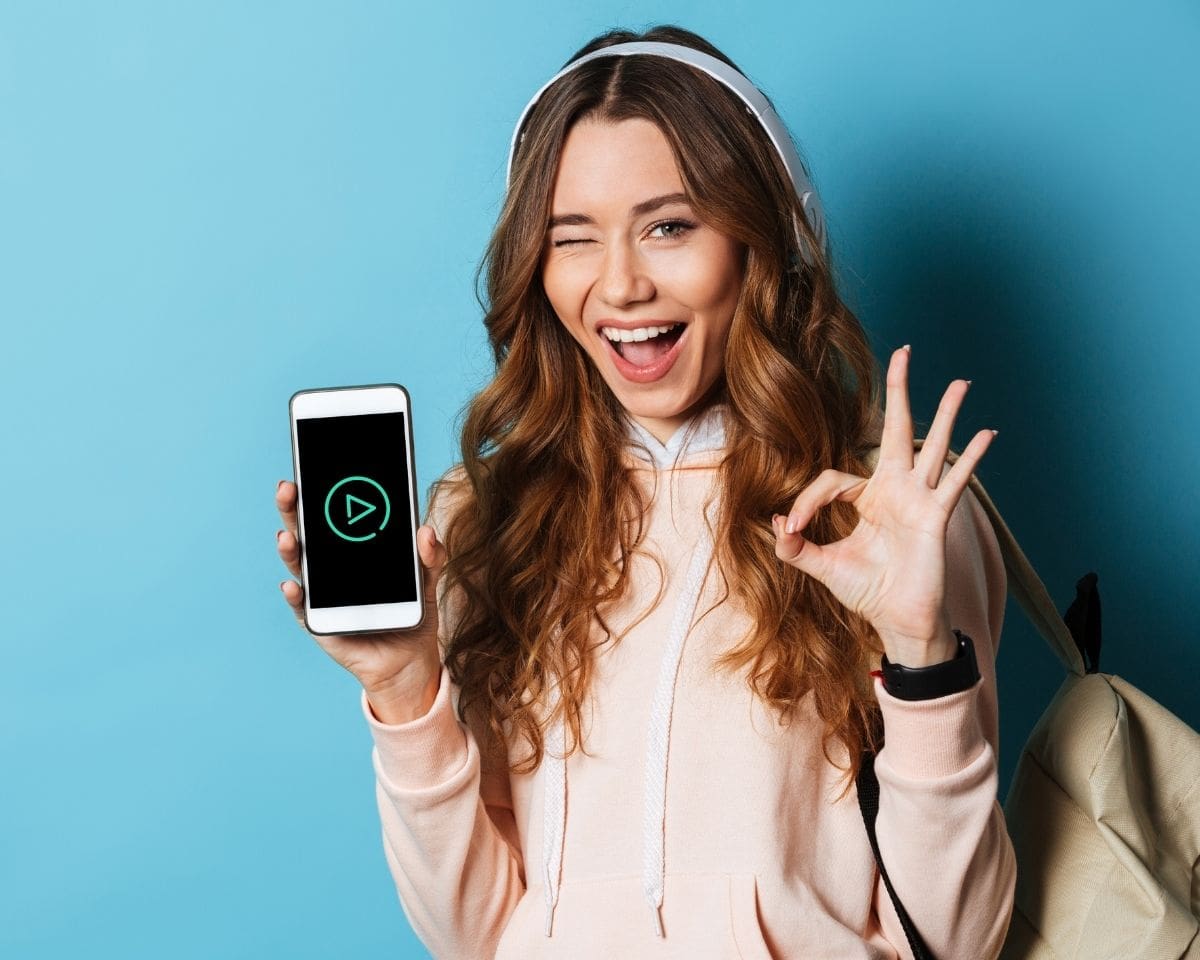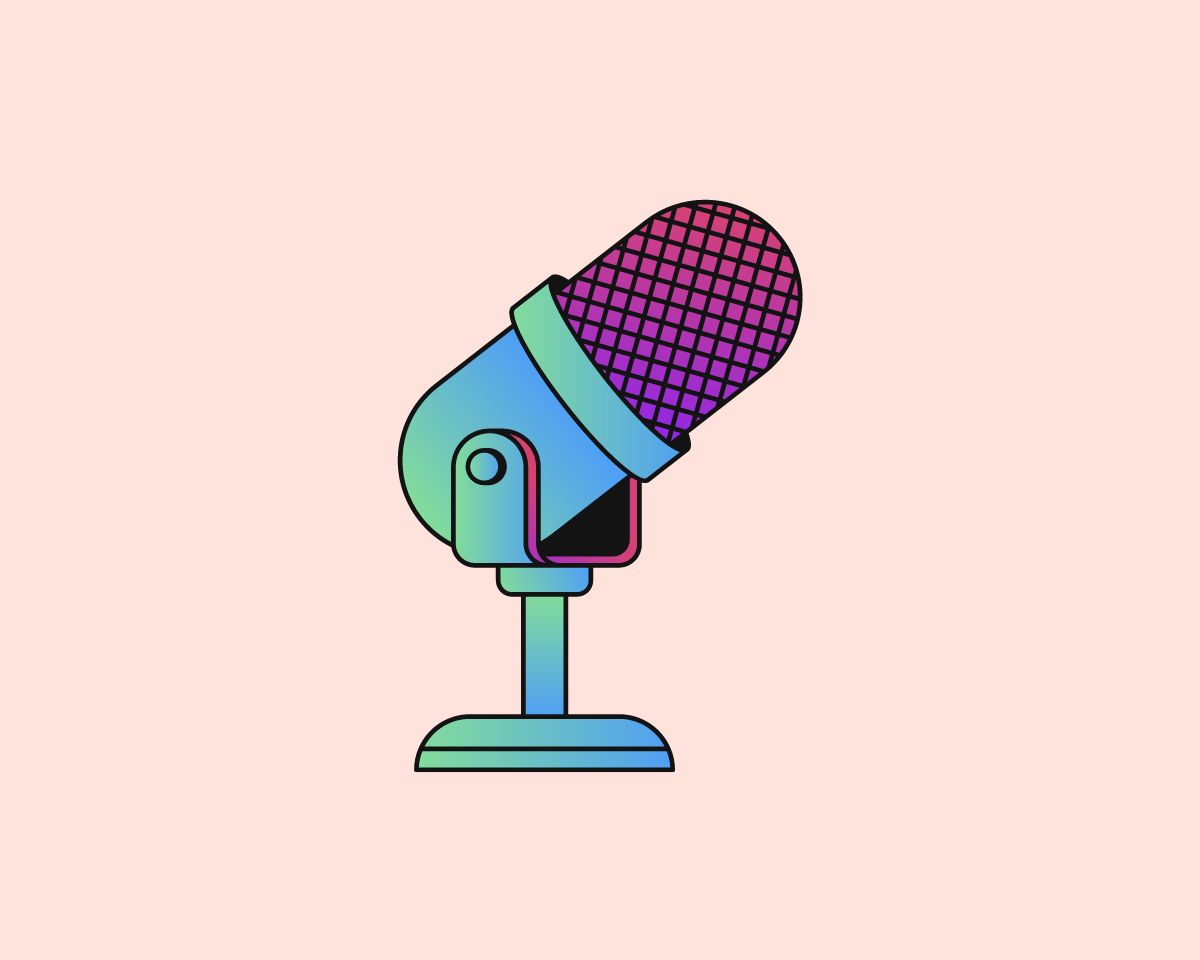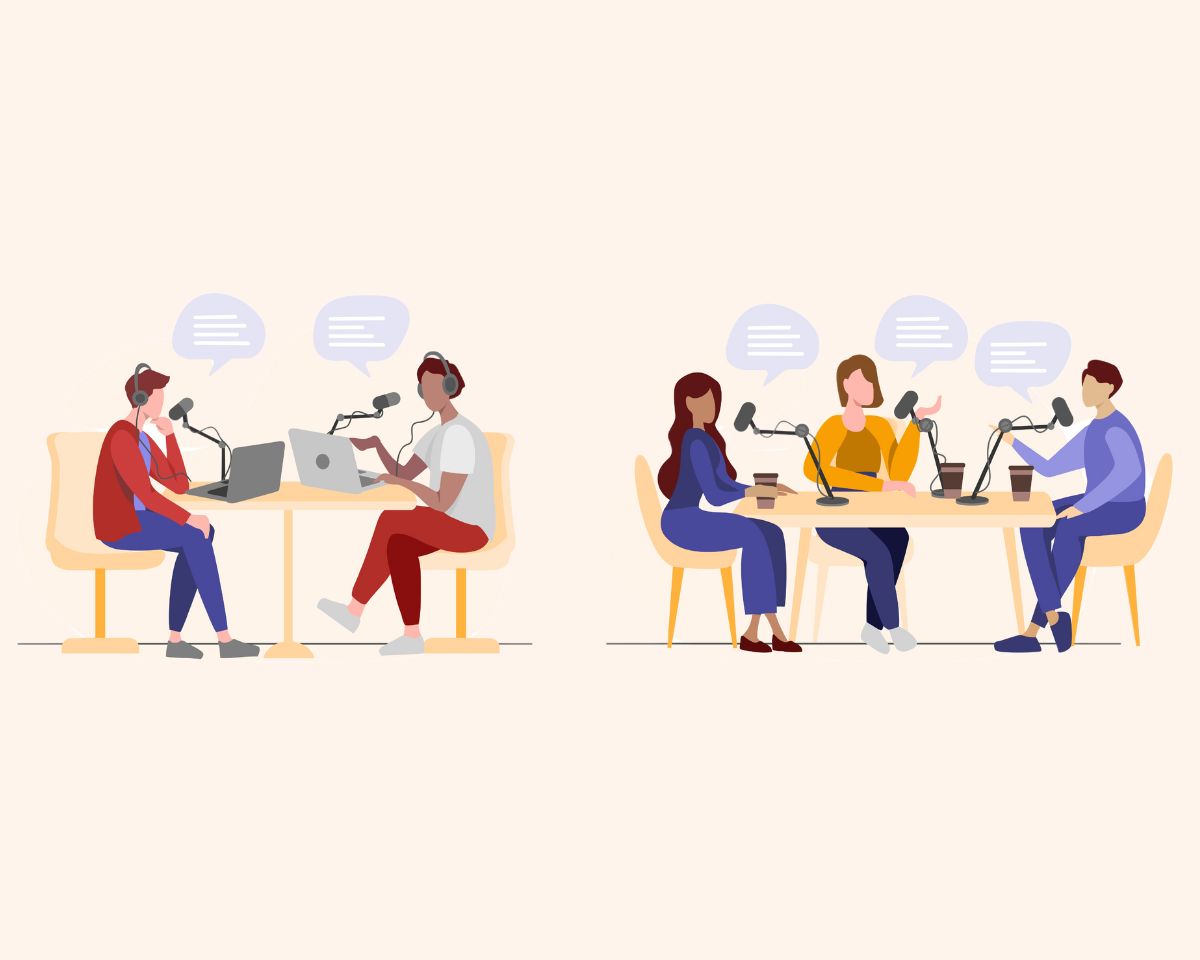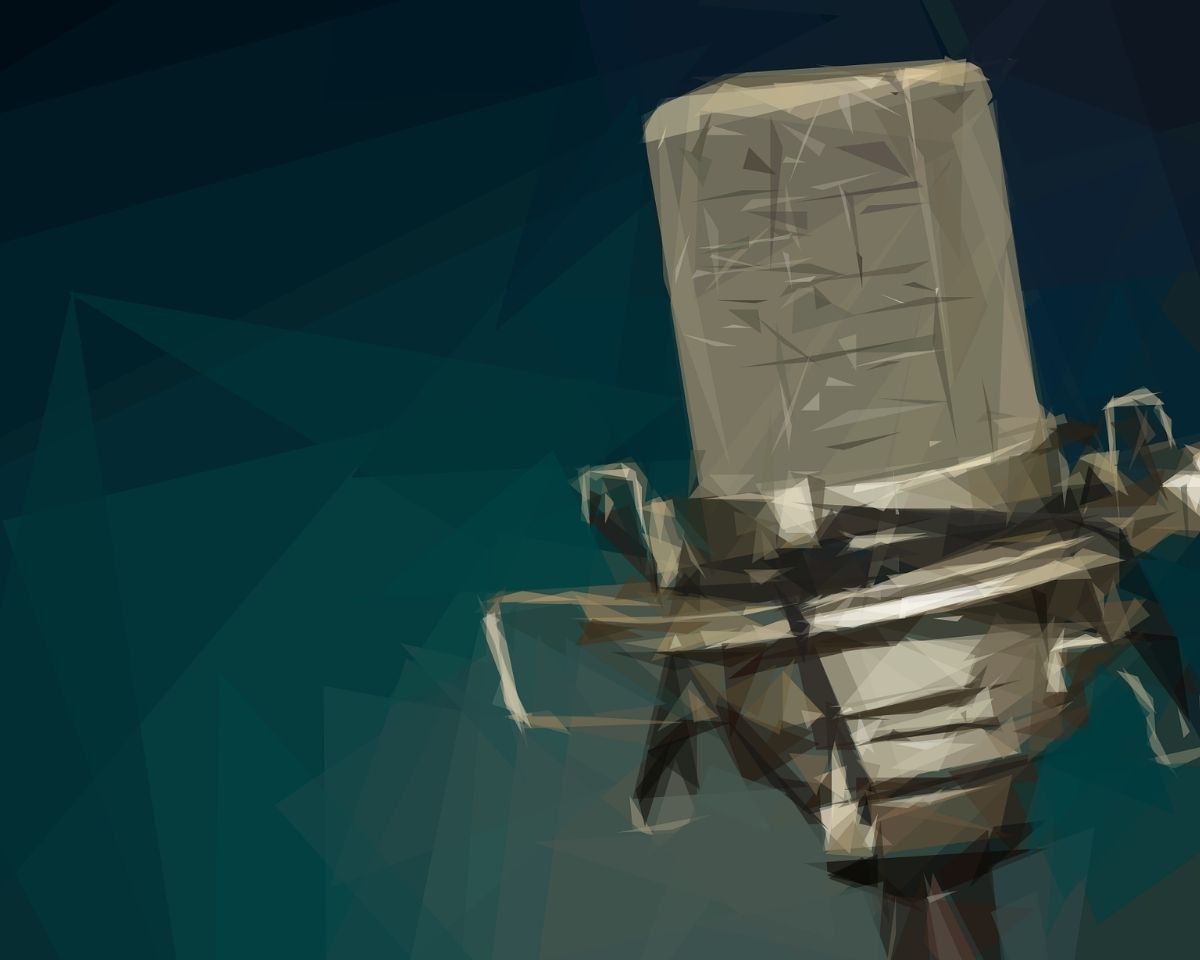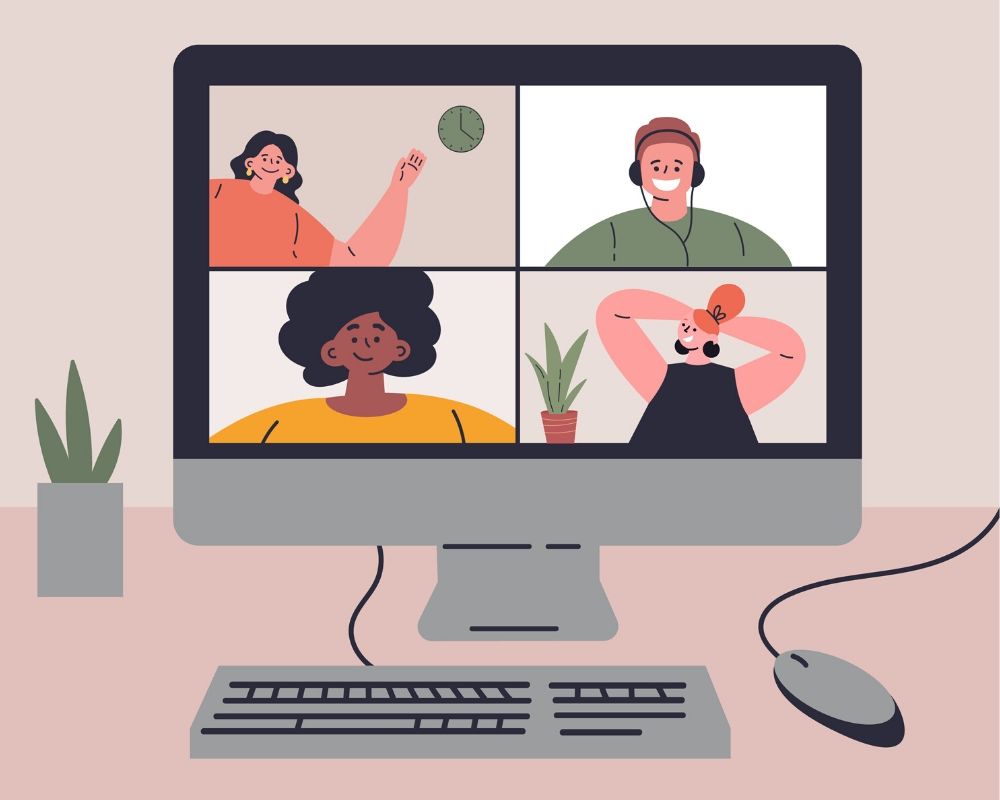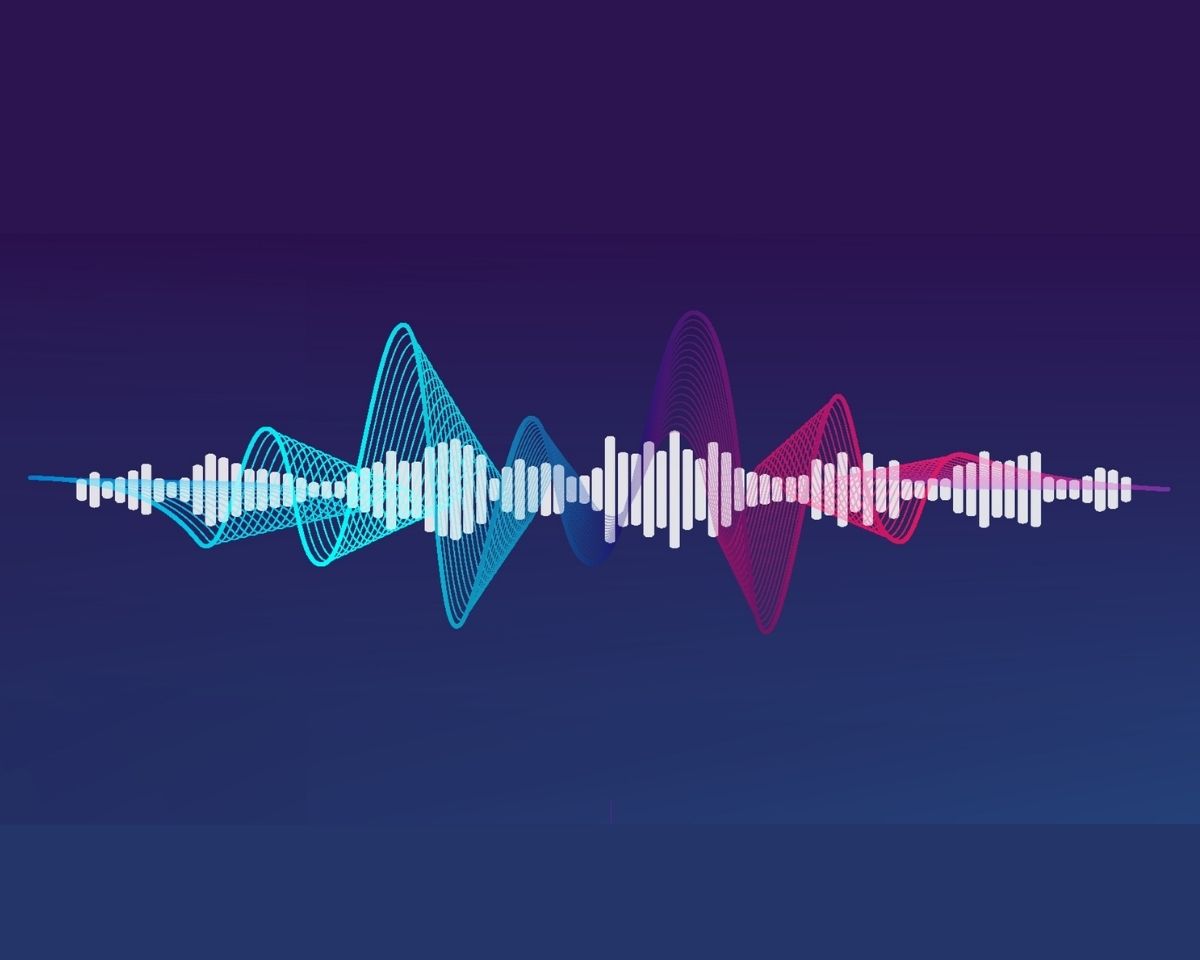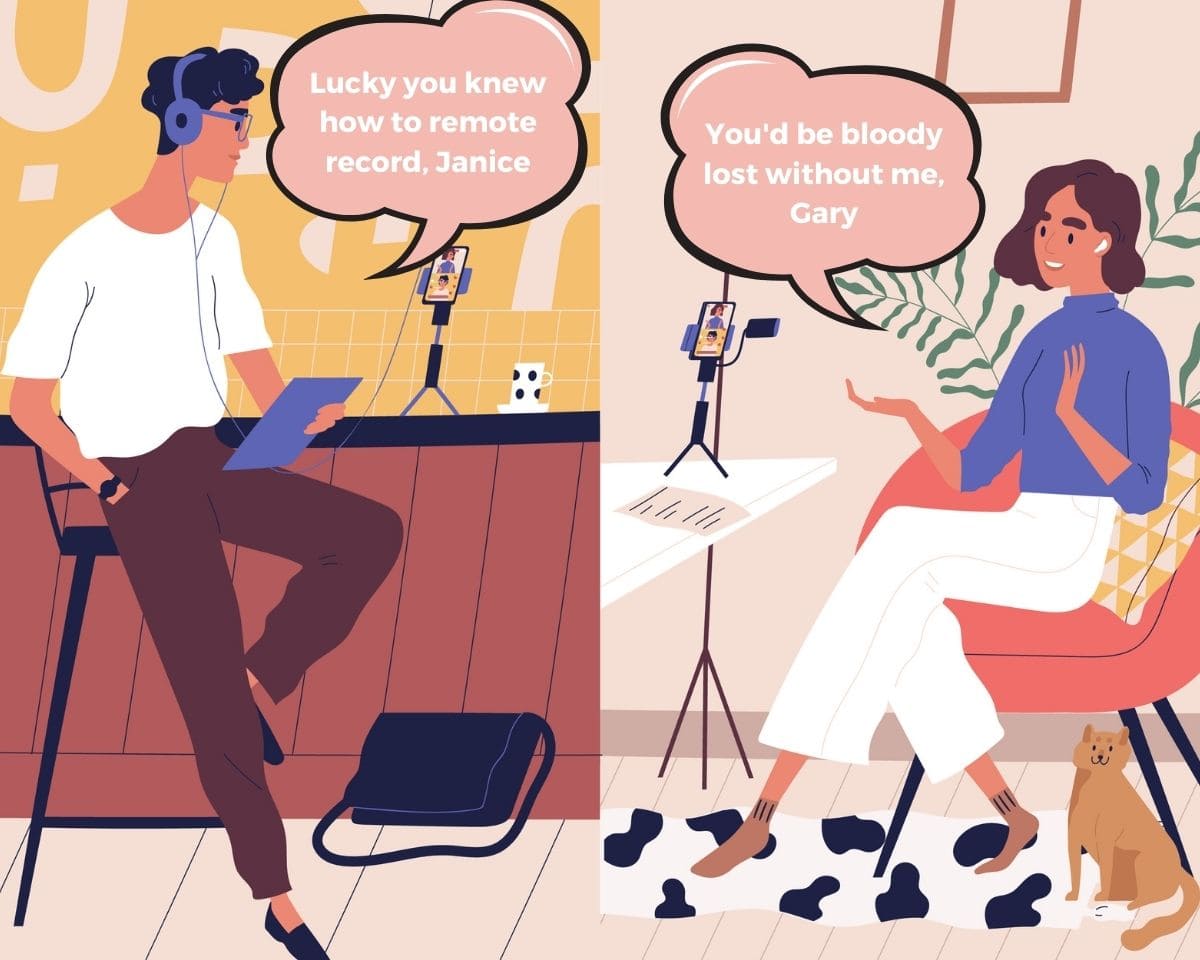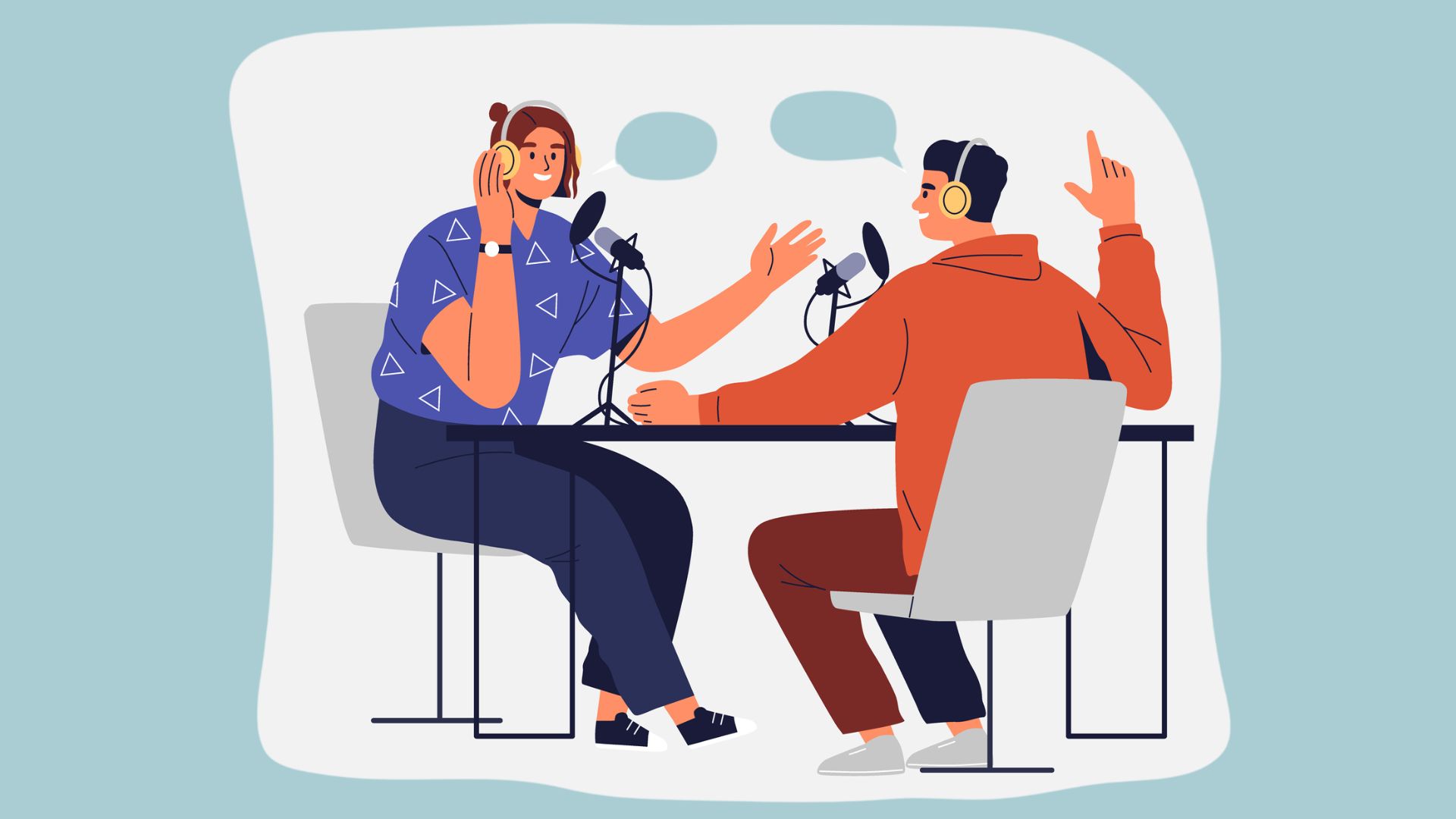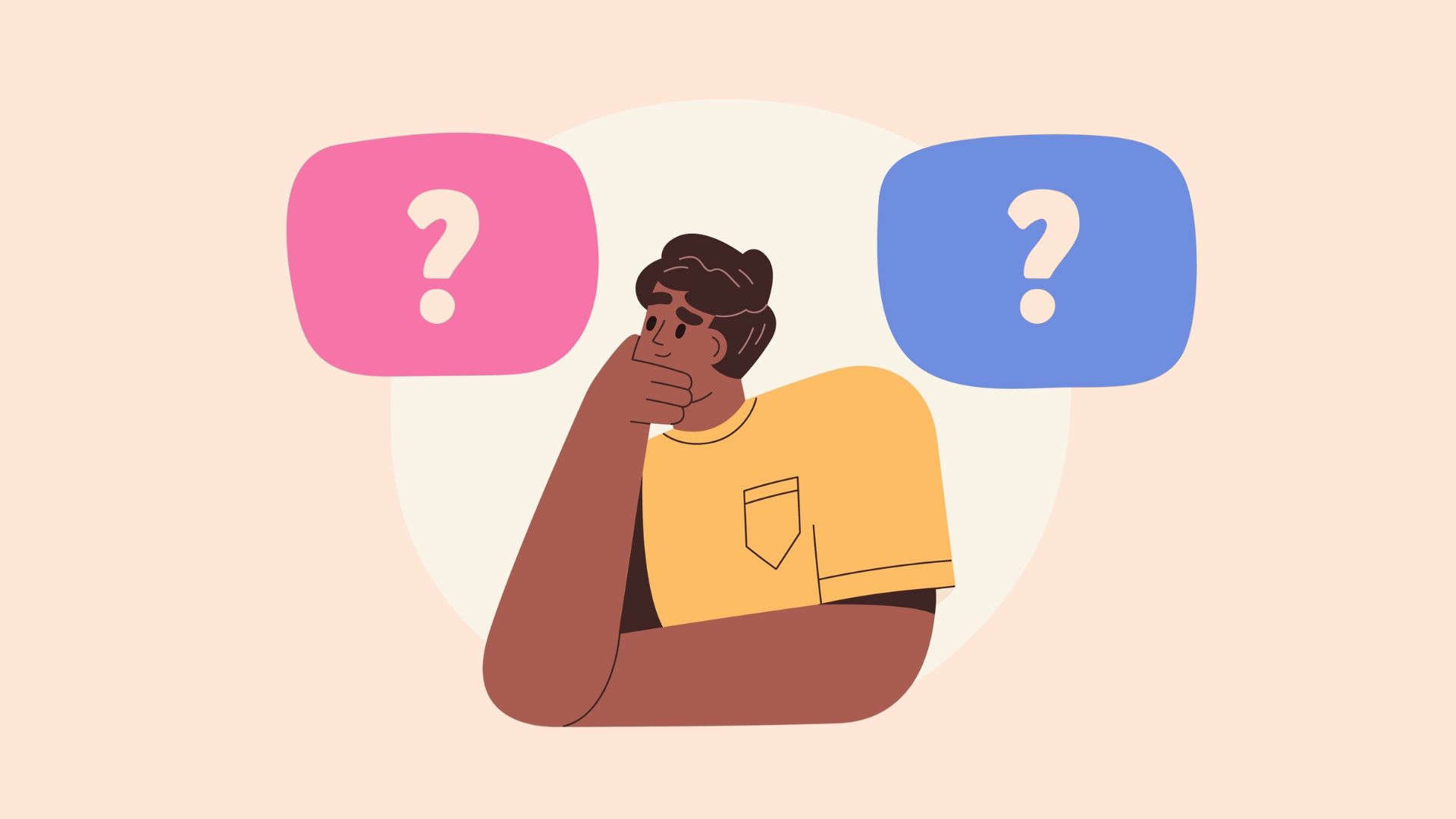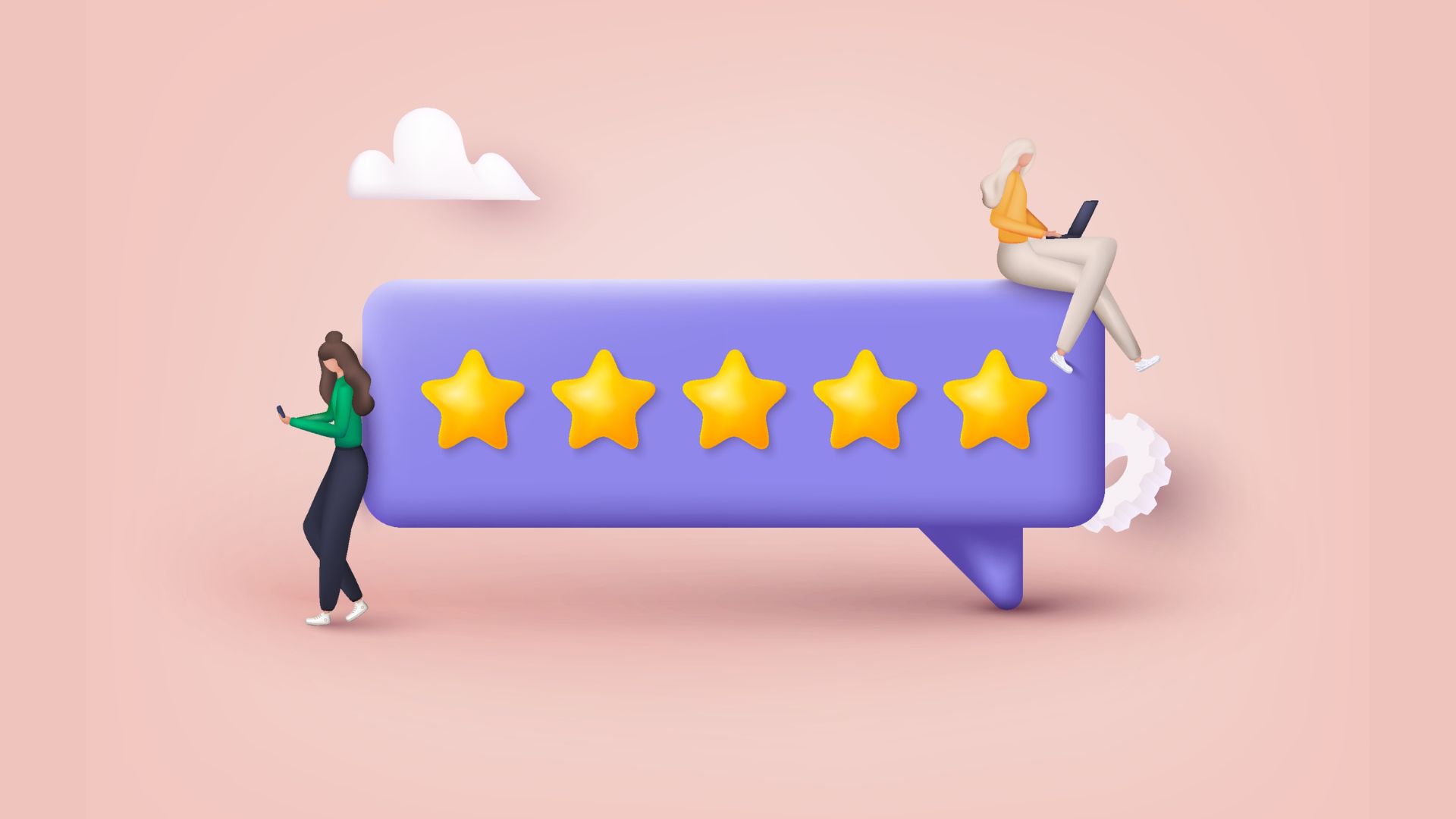How to record high-quality podcast audio when you’re not in the same room as someone
Remote recording your podcast gives you more flexibility and also more choice because you can chat with people even if they’re on the other side of the world. But you want to make sure this convenience isn’t coming at the expense of the audio quality of your podcast.
So how do you make sure your podcast sounds the best it possibly can when you’re recording via a remote recording website or video conferencing software?
Buy good microphones
This will make all the difference to the audio quality no matter what method of recording you’re using.
If you’re recording via video conferencing software (Skype or Zoom) your guest will sound much better if they’re using a decent microphone.
However, it’s important to note with this method, even with the best mic in the world, your guest will always be at a lower, phone-like quality because they’re being recorded through the software.
If you want to use this method but you want the audio to sound like you’re in the same room you’ll need to record each participant locally either by changing the settings in the back end (Zoom) or by using an additional piece of software like eCamm Call Recorder (Skype).
If you’re recording via a remote recording platform like Zencastr, Squadcast, Ringr or Riverside.fm a good quality microphone for everyone speaking on the podcast is essential.
This is because when you use these platforms all the audio is recorded locally. So, if anyone has a bad microphone you’ll end up with a high-quality recording of bad audio, which isn’t great.
When it comes to choosing a microphone, you don’t need to spend a lot of money to get great sound but it’s always a good idea to test the audio before you record your interview.
You can do this by recording your briefing chat or pre-interview to make sure it’s high enough quality to use for your show.
Buy pop guards and mic stands
“Pops” are the harsh sounds that occur when you say words starting with consonants like ‘p’ or ‘b.’ These sounds often happen if you’re talking directly down the barrel of the microphone or because you’re too close to it.
A pop guard or pop filter can put distance between you and the microphone to reduce ‘pops’ in your recording. This is a good idea because they’re really annoying to listen to and an absolute punish to edit out.
Good microphone technique will also help you reduce these sounds so it’s a good idea to practice where you need to be in front of your mic to stop the popping.
Another thing you definitely want is a mic stand for every microphone you’re using on the show.
Getting mics out of people’s hands is so important because when people are holding them it adds a whole bunch of random noise to the recording that can muddy your podcast audio quality.
Think about where you’re going to record
Your surroundings will have a huge impact on the quality of your podcast audio quality and even the best microphone will suck if there’s wind noise or a lot of echo in the room you’re recording in.
Avoiding hard surfaces like glass and tiles and sticking to rooms with carpet and curtains can help because you want the space you’re in to absorb the sound of your voice rather than reflect it.
Watch out for overtalk
Overtalk is a wanky way of saying more than one person is talking at the same time.
It’s a big no-no in podcasting for obvious reasons – you can’t hear a damn word anyone is saying when they’re all jabbering at once.
When you’re in the same room it’s easier to manage this because you can see when someone is leaning in to speak or winding up their train of thought.
This is why using a remote recording platform with built-in video, or running a program like Skype at the same time is essential because you want to be able to see your co-host or guest.
Turn off everything else on your computer when you’re recording
There’s nothing worse than listening to an interview where someone’s email notifications are going off every two seconds, so turn everything off and ask your guest to do the same.
As a habit, I’d suggest the program you’re recording into should be the only program you have open when you’re doing your show.
That way there’s no chance something will ping halfway through the interview and your internet connection can be solely dedicated to keeping your interview or chat alive.
Make sure you’re somewhere with a good internet connection
You want to avoid anything that interrupts the flow of conversation and nothing is more jarring than someone’s audio breaking up mid-sentence, except perhaps, losing them completely.
A crappy internet connection isn’t your fault but when you’re in the middle of a chat and have to keep stopping and starting your guest, it’s you who ends up looking unprofessional.
Some remote recording platforms can be a bit glitchy but because audio is being recorded locally this usually doesn’t affect the final audio. However, if you’re missing bits of someone’s conversation it will affect the flow of the chat, which isn’t ideal.
Make the most of your headphones
When you’re recording audio, microphones pick up things your ears would never hear so you want to make sure you’re monitoring every little detail as you’re recording so you can fix things as you go.
Maybe you can hear the air conditioner where your guest is recording or perhaps their dog is panting under their desk and it sounds weird.
These sounds can be distracting for a listener (and make editing more difficult) so you want to make sure you’re listening out for them BEFORE you get to the editing stage.
The goal, when you record, is to get the highest quality podcast audio in the moment, so you’re not stuck with something you can’t fix later, or heaven forbid that you have to re-record entirely.
The more attention you pay to your podcast audio quality when you’re recording the better your show will be.
Got a burning podcasting question you’d like answered? Send me an email.
Want to start your own podcast but need a little help? Download my “How To Start A Podcast” guide or sign up for my online podcasting course, PodSchool.
